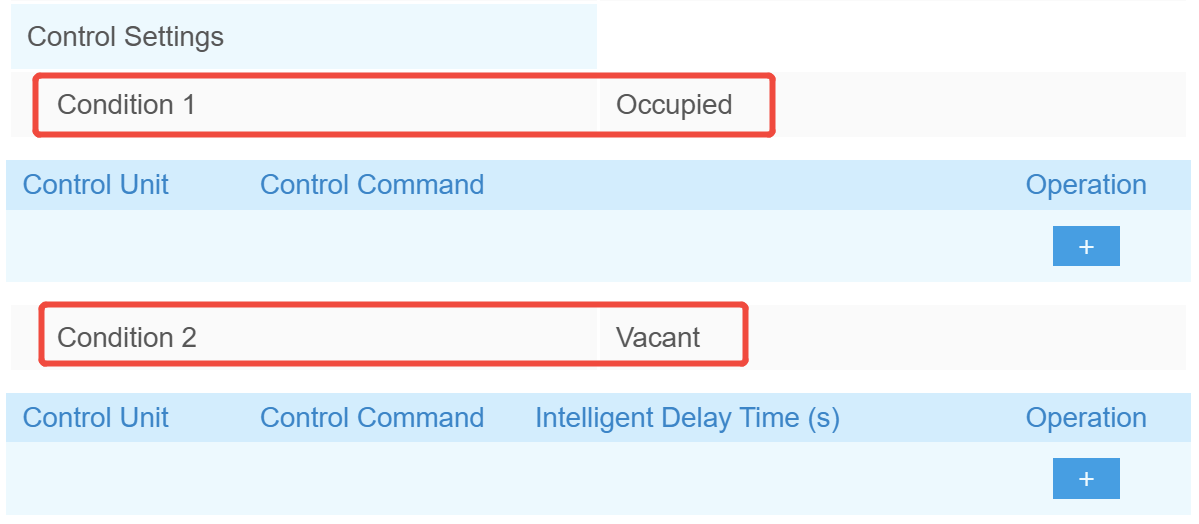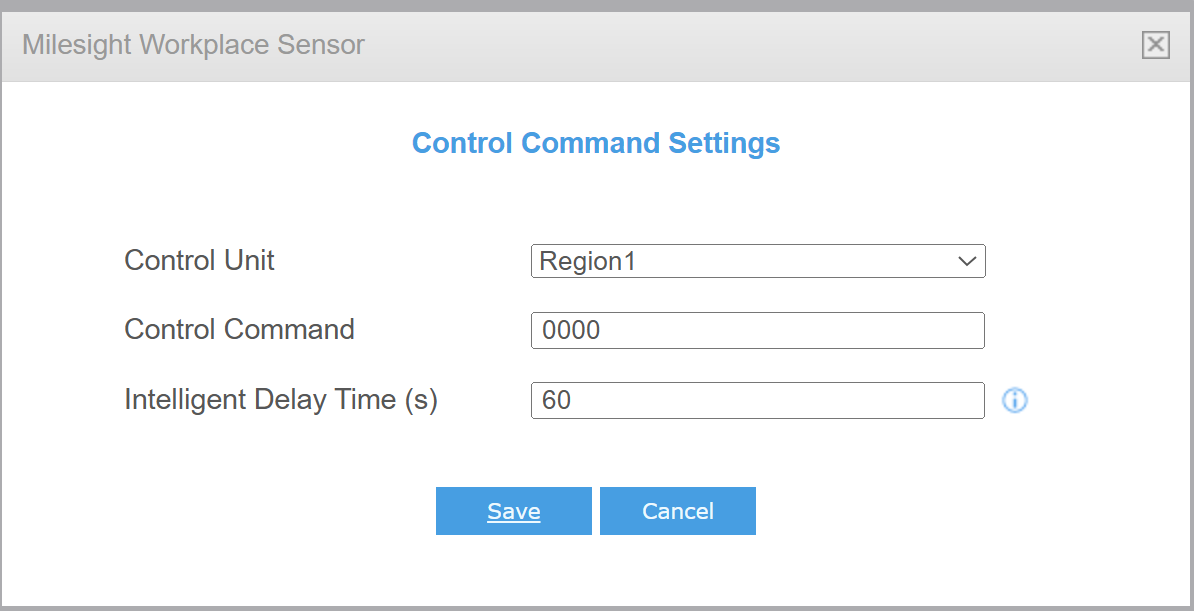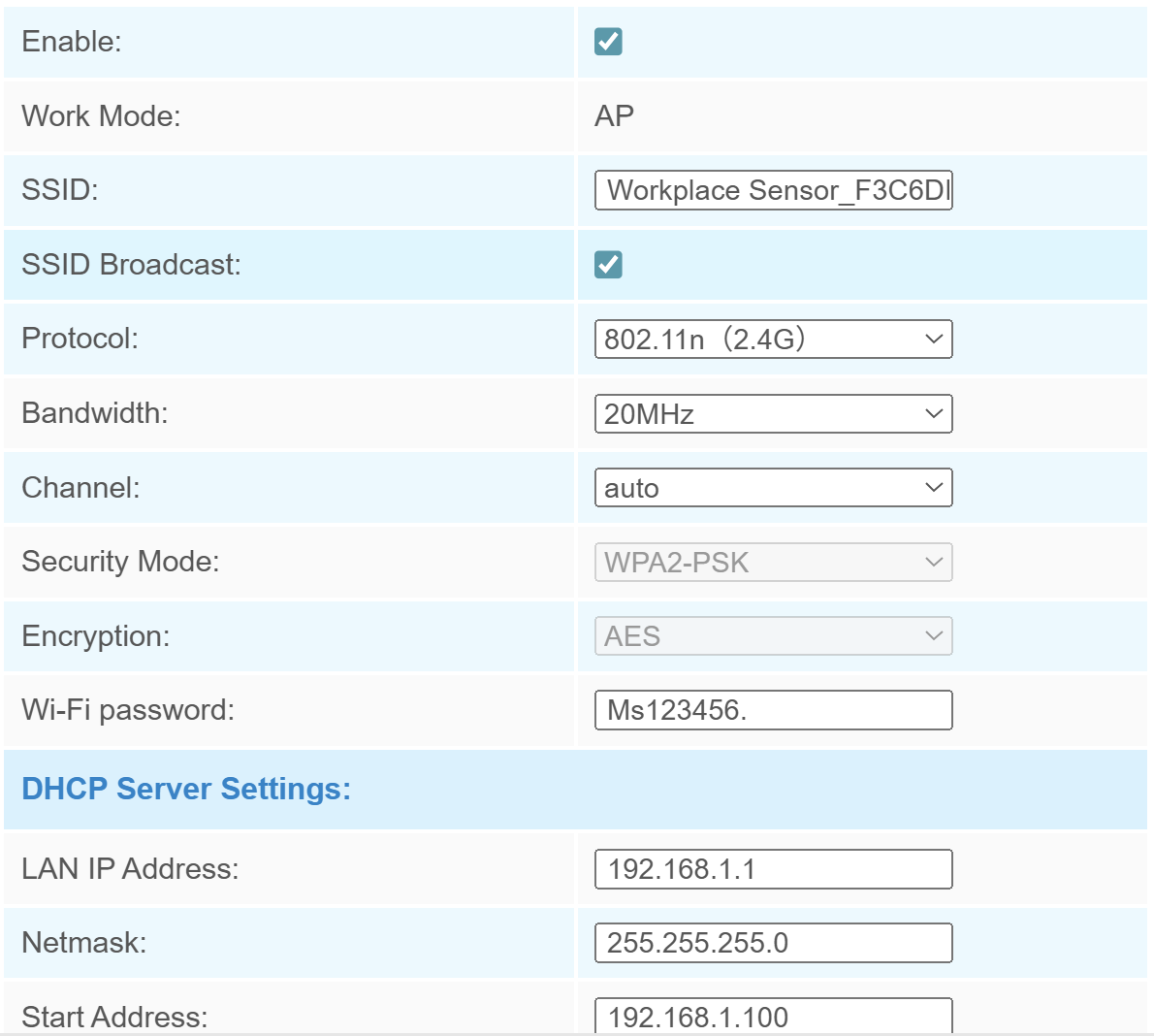Network
LoRaWAN®
LoRaWAN settings is used for configuring the transmission parameters in LoRaWAN® network.

| Parameters | Description |
|---|---|
| Status | LoRaWAN® network status of this device. |
| Basic Settings | |
| Device EUI | Unique ID of the device which can be found on the
device. Note: please contact sales for device
EUI list if you have many units. |
| App EUI | The default App EUI (join EUI) is 24E124C0002A0001. |
| Join Type | OTAA and ABP mode are
available. Note: it's necessary to select
OTAA mode if connecting device to Milesight IoT Cloud.
|
| Application Key | Appkey for OTAA mode, default value: "Device EUI" + "Device EUI"
(since Q4 of 2025). Example: 24e124123456789024e1241234567890 Note:
|
| Device Address | DevAddr for ABP mode, default is the 5th to 12th digits of SN. |
| Network Session Key | Nwkskey for ABP mode, the default is 5572404C696E6B4C6F52613230313823. |
| Application Session Key | Appskey for ABP mode, the default is 5572404C696E6B4C6F52613230313823. |
| RX2 Data Rate | RX2 data rate to receive downlinks or send D2D command. |
| RX2 Frequency/MHz | RX2 frequency to receive downlinks or send D2D command. |
| Advance Settings | |
| Confirmed Mode |
If the device does not receive ACK packet from network server, it will resend data once. |
| ADR Mode | Enable or disable network server to adjust Spreading Factor, Bandwidth an Tx Power to optimize data rates, airtime and energy consumption in the network. |
| Rejoin Mode |
Reporting interval≤35 mins: the device will send a specific number of LinkCheckReq MAC packets to the network server every reporting interval or every double reporting interval to validate connectivity; If there is no response, the device will re-join the network. Reporting interval > 35 mins: the device will send a specific number
of LinkCheckReq MAC packets to the network server every reporting
interval to validate connectivity; If there is no response, the
device will re-join the network.
Note:
|
| Port | The port used for sending and receiving data, default port is 85. |
| Spreading Factor | If ADR mode is disabled, the device will send uplink data following this SF parameter. The higher the spreading factor, the longer the transmission distance, the slower the transmission speed and the more the consumption. |
| Tx Power | Tx power (transmit power) refers to the strength of the outgoing signal transmitted by the device. This is defined by LoRa alliance. |
| LoRaWAN® Version | V1.0.2 and V1.0.3 are available. |
| Region | Frequency plan of this device. |
| Single-channel Mode | When enabled, only one channel can be selected to send uplinks. Please enable this mode if you connect device to DS7610. |
| Channel | Enable or disable the frequency to
send uplinks. If frequency is one of CN470/AU915/US915, enter the
index of the channel to enable in the input box, making them
separated by commas. Examples: 1, 40: Enabling Channel 1 and Channel 40 1-40: Enabling Channel 1 to Channel 40 1-40, 60: Enabling Channel 1 to Channel 40 and Channel 60 All: Enabling all channels Null: Indicate that all channels are disabled |
D2D Settings
Milesight D2D protocol is used for setting up transmission among Milesight LoRaWAN® devices without gateway. When the Milesight D2D setting is enabled, VS121 can work as a Milesight D2D controller for sending control commands to trigger D2D agent devices.

Step 2: Enable D2D feature and define an unique D2D key which is the same as Milesight D2D agent devices. (Default D2D key: 5572404C696E6B4C6F52613230313823)

Step 3: Scroll to control setting, then choose a condition.
- Occupied:when total people counter value is non-zero in detection
area.
Vacant: when total people counter value is 0 in detection area.


| Parameters | Description |
|---|---|
| Control Unit | Choose the region to associate. |
| Control Command | Define a 2-byte hexadecimal control command (0x0000 to 0xffff). When the condition is meet, the device will send the control command to corresponding D2D agent devices. |
| Intelligent Delay Time (s) | The device will send the control command only when the detected condition remains Vacant (number of people =0) during this delay time. |

Wi-Fi

| Parameters | Description |
|---|---|
| Enabled | Enable Wi-Fi feature. |
| Work Mode | Work mode is fixed as AP and can not connect to other access point. |
| SSID | The unique name for this device
Wi-Fi access point. The default SSID is Workplace
Sensor_XXXXXX (can be found on the label). |
| SSID Broadcast | When disabled, other wireless devices can't find the SSID, and users should enter the SSID manually to get access to the wireless network. |
| Protocol | 802.11b (2.4 GHz), 802.11g (2.4 GHz), 802.11n (2.4 GHz) are optional. |
| Bandwidth | 20 MHz or 40 MHz are optional. |
| Channel | Select the wireless channel. Auto, 1,...11 are optional. |
| Security Mode | It’s fixed as WPA2-PSK. |
| DHCP Server Settings | |
|---|---|
| Parameters | Description |
| LAN IP Address | IP address that used to access the web GUI of sensor. |
| Netmask | Identify the subnet where the sensor is located. |
| Start Address | Define the beginning of IP address pool which assigns to DHCP clients. |
| End Address | Define the end of IP address pool which assigns to DHCP clients. |
| Lease Time (min) | The lease time on which DHCP client can use the IP address assigned by the sensor. |
| Primary DNS Server | Translate the domain name to IP address. |
| Secondary DNS Server | Backup DNS server. |
| Static IP | |
|---|---|
| Parameters | Description |
| MAC address | Add MAC address and static IP address if users need to add a static IP address to a specific computer. |
| IP Address | |